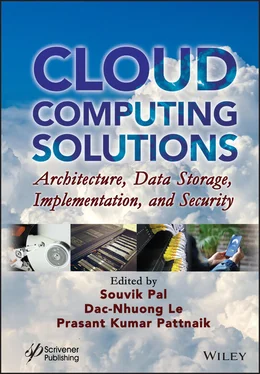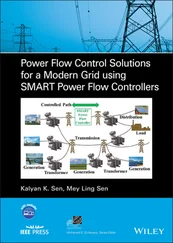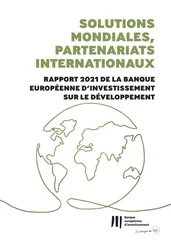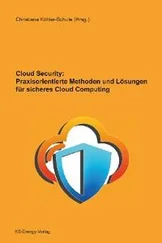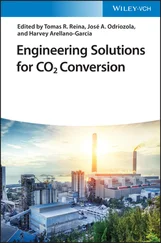Cloud Computing Solutions
Здесь есть возможность читать онлайн «Cloud Computing Solutions» — ознакомительный отрывок электронной книги совершенно бесплатно, а после прочтения отрывка купить полную версию. В некоторых случаях можно слушать аудио, скачать через торрент в формате fb2 и присутствует краткое содержание. Жанр: unrecognised, на английском языке. Описание произведения, (предисловие) а так же отзывы посетителей доступны на портале библиотеки ЛибКат.
- Название:Cloud Computing Solutions
- Автор:
- Жанр:
- Год:неизвестен
- ISBN:нет данных
- Рейтинг книги:3 / 5. Голосов: 1
-
Избранное:Добавить в избранное
- Отзывы:
-
Ваша оценка:
- 60
- 1
- 2
- 3
- 4
- 5
Cloud Computing Solutions: краткое содержание, описание и аннотация
Предлагаем к чтению аннотацию, описание, краткое содержание или предисловие (зависит от того, что написал сам автор книги «Cloud Computing Solutions»). Если вы не нашли необходимую информацию о книге — напишите в комментариях, мы постараемся отыскать её.
The main purpose of this book is to include all the cloud-related technologies in a single platform, so that researchers, academicians, postgraduate students, and those in the industry can easily understand the cloud-based ecosystems.
Audience
Cloud Computing Solutions — читать онлайн ознакомительный отрывок
Ниже представлен текст книги, разбитый по страницам. Система сохранения места последней прочитанной страницы, позволяет с удобством читать онлайн бесплатно книгу «Cloud Computing Solutions», без необходимости каждый раз заново искать на чём Вы остановились. Поставьте закладку, и сможете в любой момент перейти на страницу, на которой закончили чтение.
Интервал:
Закладка:
11 Briefly discuss the structure of mobile peer-to-peer computing. What are the characteristics of mobile peer-to-peer computing?
12 What is an ad-hoc network? Is it always mobile? Briefly discuss the major application of mobile ad-hoc network.
13 Which are the different layers that define cloud architecture?
14 What are the different data types used in cloud computing?
15 What are the different layers in cloud computing? Explain how they work.
References
1. Garfinkel, S. (1999). Architects of the information society: 35 years of the Laboratory for Computer Science at MIT. MIT press. ISBN 978-0-262-07196-3.
2. Paul, F., & Michael, S. (2000). Fire in the valley: The making of the personal computer. New York: Osborne-McGraw-Hill.
3. Foster, I. (2003). The grid: Computing without bounds. Scientific American, 288(4), 78-85.
4. Sadashiv, N., & Kumar, S. D. (2011, August). Cluster, grid and cloud computing: A detailed comparison. In 2011 6th International Conference on Computer Science & Education (ICCSE) (pp. 477-482). IEEE.
5. Buyya, R. (1999). High performance cluster computing: Architectures and systems (volume 1). Prentice Hall, Upper SaddleRiver, NJ, USA, 1, 999.
6. Mark baker and Rajkumar Buyya, “Cluster Computing at a Glance”
7. Foster, I., & Kesselman, C. (Eds.). (2003). The Grid 2: Blueprint for a new computing infrastructure . Elsevier.
8. Zhang, S., Chen, X., Zhang, S., & Huo, X. (2010, October). The comparison between cloud computing and grid computing. In 2010 International Conference on Computer Application and System Modeling (ICCASM 2010) (Vol. 11, pp. V11-72). IEEE.
9. Weishaupl, T., & Schikuta, E. (2004, October). Towards the merger of grid and economy. In International Conference on Grid and Cooperative Computing (pp. 563-570). Springer, Berlin, Heidelberg.
10. Jackson, K. R., Ramakrishnan, L., Muriki, K., Canon, S., Cholia, S., Shalf, J., ... & Wright, N. J. (2010, November). Performance analysis of high performance computing applications on the amazon web services cloud. In 2010 IEEE second international conference on cloud computing technology and science (pp. 159-168). IEEE.
11. Le, D. N., Kumar, R., Nguyen, G. N., & Chatterjee, J. M. (2018). Cloud Computing and Virtualization . John Wiley & Sons.
12. Le, D. N., Bhatt, C. M., & Madhukar, M. (Eds.). (2019). Security Designs for the Cloud, IoT, and Social Networking . John Wiley & Sons.
13. Hurwitz, J. S., & Kirsch, D. (2020). Cloud Computing for Dummies. John Wiley & Sons.
14. Ruan, L., Guo, S., Qiu, X., & Buyya, R. (2020). Fog Computing for Smart Grids: Challenges and Solutions. arXiv preprint arXiv:2006.00812.
15. Huth, A., & Cebula, J. (2011). The Basics of Cloud Computing. United States Computer.
16. Allahvirdizadeh, Y., Moghaddam, M. P., & Shayanfar, H. (2019). A survey on cloud computing in energy management of the smart grids. International Transactions on Electrical Energy Systems , 29(10), e12094.
17. Srinivasan, S. (2014). Cloud Computing Basics. Springer.
18. Pattnaik, P. K., & Mall, R. (2015). Fundamentals of Mobile Computing. PHI Learning Pvt. Ltd..
19. Rountree, D., & Castrillo, I. (2013). The basics of cloud computing: Understanding the fundamentals of cloud computing in theory and practice. Newnes.
20. Machidon, O., Fajfar, T., & Pejovic, V. (2020). Implementing Approximate Mobile Computing. In Proc. of the 2020 Workshop on Approximate Computing Across the Stack (WAX) (pp. 1-3).
21. Van, V. N., Long, N. Q., Nguyen, G. N., & Le, D. N. (2016). A performance analysis of openstack open-source solution for IaaS cloud computing. In Proceedings of the Second International Conference on Computer and Communication Technologies (pp. 141-150). Springer, New Delhi.
22. Van, V. N., Long, N. Q., & Le, D. N. (2016). Performance analysis of network virtualization in cloud computing infrastructures on openstack. In Innovations in Computer Science and Engineering (pp. 95-103). Springer, Singapore.
23. Hurwitz, J. S., & Kirsch, D. (2020). Cloud computing for Dummies. John Wiley & Sons.
24. Seth, B., Dalal, S., Jaglan, V., Le, D. N., Mohan, S., & Srivastava, G. (2020). Integrating encryption techniques for secure data storage in the cloud. Transactions on Emerging Telecommunications Technologies, e4108.
25. Bohu, L., Lin, Z., & Xudong, C. (2020). Introduction to cloud manufacturing. ZTE Communications, 8(4), 6-9.
1 1 https://www.darpa.mil
2 2 https://home.cern
3 3 https://aws.amazon.com/ec2
4 4 https://cloud.google.com/appengine
5 5 https://www.eucalyptus.cloud
6 6 https://azure.microsoft.com
7 7 www.manjrasoft.com/aneka_architecture
2
INTRODUCTION TO CLOUD COMPUTING
SOUVIK PAL 1, DAC-NHUONG LE 2, PRASANT KUMAR PATTNAIK 3
1Sister Nivedita University, Kolkata, India
2Haiphong University, Haiphong, Vietnam
3KIIT, Deemed to be University, India
Email: souvikpal22@gmail.com, nhuongld@dhhp.edu.vn, patnaikprasant@gmail.com
Abstract
This chapter presents the basics of cloud computing and its related advances. Computing itself, to be considered absolutely virtualized, must give personal computers working from physically conveyed parts the ability to store and process information and program artifices. The end clients access computational and physical assets with utility computing, which portrays a business system for conveying the services and computational power upon request. Furthermore, as indicated by the need of the client, the intent of CSPs is to convey the services and cloud clients needed to pay the CSPs in view of their use. In cloud computing, clients are not required to know the basic design for getting services; they simply need to pay as per their utilization. Cloud is fundamentally a foundation which is kept up by some CSPs and end-clients are getting the services on request from the CSPs and need to pay the required cash for their utilization. Service providers like Amazon, Microsoft, Google, and IBM offer on-request resource and computational services to the client industrially.
Keywords: Cloud computing, cloud service provider
2.1 Definition of Cloud Computing
Numerous specialists from industry and scholarly circles have given numerous perspectives on cloud and its computational highlights. Some of them are given below.
Buyya et al. have stated that “Cloud is a parallel and dispensed framework consisting of a group of associated and virtualized personal computers that are progressively allocated and introduced as at least one bound together computational artifice in view of service-level agreements (SLA) built up through arrangement amongst the CSPs and shoppers.” [2].
McKinsey & Company expressed that “Clouds are hardware-based services offering compute, network and storage capacity where: 1) Hardware management is highly abstracted from the buyer. 2) Buyers incur infrastructure costs as variable OPEX. 3) Infrastructure capacity is highly elastic (up or down).” [3].
As per Vaquero et al.,: “Clouds are a large pool of easily usable and accessible virtualized resources (such as hardware, development platforms and/or services). These resources can be dynamically assigned to adjust to a variable load, allowing also for an optimum resource utilization. This pool of resources is typically exploited by a pay-per-use model in which guarantees are offered by the Infrastructure Provider by means of customized SLAs.” [4].
Читать дальшеИнтервал:
Закладка:
Похожие книги на «Cloud Computing Solutions»
Представляем Вашему вниманию похожие книги на «Cloud Computing Solutions» списком для выбора. Мы отобрали схожую по названию и смыслу литературу в надежде предоставить читателям больше вариантов отыскать новые, интересные, ещё непрочитанные произведения.
Обсуждение, отзывы о книге «Cloud Computing Solutions» и просто собственные мнения читателей. Оставьте ваши комментарии, напишите, что Вы думаете о произведении, его смысле или главных героях. Укажите что конкретно понравилось, а что нет, и почему Вы так считаете.
